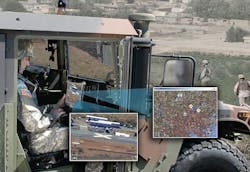Textron to provide directional antennas to help warfighters access imagery and video from UAVs
REDSTONE ARSENAL, Ala., 24 March 2015. U.S. Army surveillance experts needed directional antennas to help warfighters in the field access reconnaissance imagery and video from unmanned aerial vehicles (UAVs) and manned surveillance aircraft. They found their solution from Textron Systems Corp. in Hunt Valley, Md.
Officials of the Army Contracting Command at Redstone Arsenal, Ala., announced a $6.6 million contract to Textron on Monday for 104 mobile directional antenna systems in support of Textron's One System Remote Video Terminal (OSRVT).
The Textron OSRVT is a modular video and data system that enables warfighters to downlink live surveillance images and critical geospatial data remotely from joint operations tactical UAVs and manned aircraft.
OSRVT provides data and telemetry from UAVs like the Textron Shadow drone, yet its common software also can integrate with tracked and wheeled ground vehicles to enhance warfighter situational awareness on the battlefield.
Related: Directional coupler for EW, radar, SATCOM, and antenna beam forming introduced by KRYTAR
The OSRVT's graphical user interface delivers battlespace information in live video or annotated map views, and enables users to save, export, and analyze data.
The OSRVT delivers real-time situational awareness with a modular hardware design that can be configured for manpack, mounted, stationary, airborne, and maritime applications.
Upgrades to the OSRVT with bi-directional capabilities also will enable users to control the electro-optical and infrared sensor payloads on a variety of UAVs.
On this contract Textron (formerly AAI Corp.) will do the work in Hunt Valley, Md., and should be finished by January 2016. For more information contact Textron Systems online at www.textronsystems.com.

